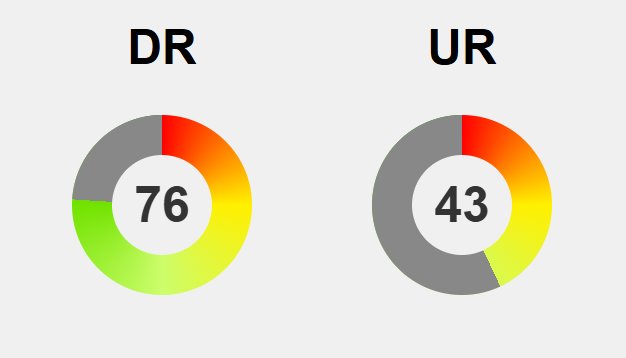Adolf Hitler’s rise from a failed artist and disillusioned soldier to one of history’s most destructive dictators underscores the terrifying power of propaganda, charisma, and unchecked ambition. His early rejection, personal failures, and exposure to radical nationalist ideas in Vienna laid the ideological foundation for his later atrocities. Exploiting Germany’s post-World War I humiliation and economic despair, Hitler masterfully manipulated public emotion through rallies, media control, and scapegoating, transforming political chaos into totalitarian domination. His regime orchestrated the Holocaust, murdering six million Jews and millions of others, revealing how propaganda dehumanizes and fuels genocide. Today, these lessons remain painfully relevant as digital misinformation and societal divisions threaten democratic values worldwide. How can societies resist the seductive pull of hate-driven propaganda and safeguard human rights? Hitler’s story is a stark warning: when fear, prejudice, and power converge, the consequences can be catastrophic—making vigilance, education, and empathy more vital than ever.
Adolf Hitler’s Transformation from Rejected Artist to Ruthless Dictator
Adolf Hitler’s rise to infamy is a chilling story of how a man with a troubled past transformed into one of history’s most devastating dictators. Born in 1889 in Braunau am Inn, Austria, his early dreams of becoming a renowned artist were shattered after repeated rejections from art schools. These setbacks left him feeling rejected and bitter, shaping a worldview rooted in resentment and failure. His family life was tense; his father’s strict discipline clashed with his mother’s gentle care, creating an environment where he often felt like an outsider.
As a young man, Hitler struggled academically and showed little interest in authority. Dropping out at 16, he moved to Vienna with hopes of pursuing art, only to be rejected again. During his years in the city, he absorbed nationalist and anti-Semitic ideas that were prevalent at the time, which fueled his radical beliefs. Living amid ethnic tensions and widespread prejudice, Hitler’s worldview became increasingly radicalized, laying the ideological groundwork for his future political ambitions.
World War I marked a turning point for Hitler. Enlisting in the Bavarian Reserve Infantry, he served bravely on the Western Front, earning medals like the Iron Cross. The war’s end and Germany’s defeat left him with a sense of humiliation and betrayal. The Treaty of Versailles, which imposed harsh penalties on Germany, became a rallying cry for Hitler’s nationalist rhetoric. He believed Germany needed a strong leader to restore its honor—an idea that would drive his relentless pursuit of power.
By 1919, Hitler joined the nascent Nazi Party, quickly establishing himself as a charismatic speaker capable of stirring emotions. His fiery speeches exploited fears of communism and economic chaos, resonating with a population desperate for stability. Using propaganda—mass rallies, posters, symbols—he built a loyal following and promoted ideas of racial superiority and national revival. His mastery of mass communication and manipulation enabled him to dismantle democratic institutions and consolidate power swiftly.
Hitler’s rise was deliberate, built on exploiting societal fears and economic hardship. His leadership style combined propaganda, intimidation, and strategic political moves. Once appointed Chancellor in 1933, he quickly moved to establish a totalitarian regime. The Nazi regime’s racist laws, aggressive expansionism, and genocidal policies unleashed horrors that would leave scars for generations. His ascent demonstrates how charisma, propaganda, and ruthless tactics can transform a failed artist and disillusioned soldier into a destructive force on a global scale.
The Formative Years That Shaped Hitler’s Radical Ideology
Adolf Hitler was born on April 20, 1889, in Braunau am Inn, a small border town between Austria and Germany. He was the fourth of six children, but only his younger sister Paula survived into adulthood. His father, Alois Hitler, was a strict and authoritarian customs official whose harsh discipline created a tense and often oppressive home environment. His mother, Klara, was gentle and nurturing, forming a close bond with Adolf that contrasted sharply with his father’s sternness.
From a young age, Hitler struggled academically and showed little interest in school. His grades were poor, and he often clashed with authority figures, feeling like an outsider among his peers. At 16, he dropped out of school, and by 18, he moved to Vienna with hopes of pursuing a career in art. However, his application to the Academy of Fine Arts was rejected twice, a blow that deepened his sense of rejection and bitterness.
Living in Vienna, Hitler was exposed to the city’s ethnic tensions and widespread anti-Semitic sentiments. The diverse population and prevalent nationalist rhetoric resonated with him deeply, shaping his worldview. During these years, he began to adopt radical beliefs, influenced by the prejudiced ideas circulating around him. His experiences in Vienna marked the beginning of his radicalization, as he immersed himself in nationalist and anti-Semitic ideologies that would later form the core of his political identity.
World War I was a pivotal moment for Hitler. Enlisting in the Bavarian Reserve Infantry, he served bravely on the Western Front, earning medals like the Iron Cross for his courage. The war’s end and Germany’s defeat left him with feelings of humiliation and betrayal, which he would carry into his political career. The Treaty of Versailles, with its harsh penalties and national humiliation, became a rallying point for his nationalist rhetoric.
The aftermath of the war and Germany’s instability created fertile ground for Hitler’s rise. In 1919, he joined the German Workers’ Party, which soon became the Nazi Party. His fiery speeches and charismatic presence quickly made him a prominent figure. Exploiting fears of communism and economic chaos, he used propaganda, mass rallies, and symbols to rally support. His ability to manipulate emotions and spread his ideas helped him build a loyal following rooted in nationalism and racial hatred.
Hitler’s early years in politics laid the groundwork for his eventual rise to power. He mastered the art of stirring anger and resentment, transforming personal failures into a narrative of victimhood and destiny. His oratory skills and propaganda acumen allowed him to appeal to a broad, disillusioned audience, setting the stage for the brutal regime he would soon establish.
By 1933, Hitler’s rise was complete as he became Chancellor of Germany. His background—marked by rejection, hardship, and radical beliefs—had been instrumental in shaping the man who would lead a regime responsible for some of the most horrific crimes in history. His early life and formative years reveal how a combination of personal disappointment and societal prejudice can propel someone toward destructive extremes.
Strategic Moves and Propaganda That Catapulted Hitler to Power
Hitler’s rise to power was no accident; it was a carefully orchestrated process of strategic moves and masterful propaganda that gradually reshaped Germany’s political landscape. After the failed Beer Hall Putsch in 1923, Hitler realized that seizing power through force was unlikely. Instead, he shifted focus to gaining influence through legal political channels, working tirelessly to rebuild the Nazi Party and expand its support nationwide. His speeches became more polished and emotionally charged, transforming rallies into theatrical events designed to ignite strong feelings of nationalism, fear, and resentment.
Propaganda played a pivotal role in this transformation. Hitler understood how to manipulate collective emotion—using fiery rhetoric, powerful symbols, and compelling imagery to foster a sense of unity among supporters. His speeches often blamed Jews, communists, and foreigners for Germany’s woes, tapping into widespread fears and prejudices. He also skillfully controlled the media—dominating newspapers, radio broadcasts, and public displays—to amplify his message and cultivate a larger-than-life image. This relentless messaging helped position him as the only leader capable of saving Germany from chaos.
The economic turmoil of the Great Depression only boosted Hitler’s appeal. With unemployment soaring and faith in the Weimar Republic waning, Germans craved a decisive figure promising stability and revival. The Nazis offered simple, aggressive solutions rooted in racial superiority and militarism. Hitler exploited these anxieties, using propaganda and intimidation to erode support for traditional parties and present himself as the only viable alternative.
By 1933, the political landscape had shifted enough for Hitler to be appointed Chancellor. His support base was loyal, and his ability to sway public opinion—by exploiting fears, grievances, and hopes—had reached its peak. Once in office, he moved swiftly to dismantle democratic institutions, using events like the Reichstag Fire as pretexts to suspend civil liberties and arrest opposition. These tactics allowed him to consolidate power rapidly, transforming the government into a tool for his totalitarian vision.
Hitler’s mastery of propaganda and strategic manipulation enabled him to ascend from a fringe agitator to the leader of a nation. Every speech, rally, and media appearance was carefully calibrated to reinforce his image and suppress dissent. His ability to craft a narrative of national rebirth—centered on racial superiority and militarism—resonated deeply in a society desperate for hope. This calculated combination of persuasion and repression set the stage for the atrocities that would soon follow.
His rise was marked by a calculated dismantling of democratic norms, paving the way for a brutal regime. The Nazi Party’s growth was driven by exploiting societal fears and prejudices, which Hitler tapped into with skill and ruthlessness. As he gained power, his tactics became more aggressive, culminating in policies of persecution, expansionism, and genocide. His strategic approach to seizing control underscores how propaganda, when wielded ruthlessly, can turn a demagogue into a devastating dictator.
In the end, Hitler’s ascent was a blend of calculated political maneuvers, emotional manipulation, and relentless propaganda. His ability to exploit societal vulnerabilities and present himself as the savior of Germany allowed him to bypass democratic safeguards. This strategic journey from outsider to dictator highlights the dangerous power of propaganda and the importance of vigilance in defending democratic values against such manipulative forces.
Understanding how propaganda shaped Hitler’s rise offers valuable lessons on the importance of media literacy and critical thinking. To learn more about the role of propaganda in historical contexts, you can explore this comprehensive analysis of propaganda's impact on history.
Lessons from the Holocaust: Remembering the Horrors of Totalitarian Atrocity
The atrocities committed under Hitler’s regime serve as a stark reminder of how quickly hatred, prejudice, and unchecked power can lead to unimaginable suffering. Remembering the Holocaust isn’t just about honoring the victims; it’s about understanding the devastating outcomes when society allows dehumanization and propaganda to go unchallenged. The systematic murder of six million Jews, along with millions of others targeted for their ethnicity, beliefs, or disabilities, was made possible by a brutal machinery of genocide fueled by racist ideology and relentless misinformation. Studying these events helps us grasp how easily fear and hatred can be manipulated into mass violence when leaders exploit societal divisions.
This history underscores the importance of vigilance and active resistance. Totalitarian regimes thrive when silence or indifference take hold in the face of injustice. The Nazi regime’s use of propaganda to dehumanize entire communities made it easier for ordinary people to accept or participate in atrocities. Recognizing these tactics today—such as misinformation, scapegoating, and fear-mongering—is crucial to preventing similar horrors. Education about these dark chapters fosters empathy, critical thinking, and a commitment to human rights, ensuring the lessons of the past are not forgotten but serve as a shield against repeating history’s worst mistakes.
The rise and fall of Hitler reveal how fragile democratic societies are when fundamental checks and balances break down. When leaders manipulate fear and spread hatred, the consequences can be catastrophic. The Nazi regime’s policies—ranging from racial laws to mass extermination—demonstrate how dangerous it is when hate is allowed to flourish unchecked. These lessons remind us of the need to uphold democratic institutions, promote tolerance, and speak out against hate speech and discrimination before such ideologies gain footholds again. Vigilance and active engagement are vital tools in safeguarding the values that prevent history’s darkest episodes from recurring.
Propaganda was central to enabling Hitler’s rise and the atrocities that followed. Its power lies in shaping perceptions, dehumanizing enemies, and creating a false sense of unity around destructive ideas. Recognizing how propaganda manipulates emotions—through symbols, speeches, and tightly controlled media—reinforces the importance of media literacy and critical analysis. When societies fail to question or challenge manipulative messaging, they risk falling under the influence of leaders who exploit fears for violent ends. Understanding these tactics is essential in building resilience and resisting the forces that threaten democratic principles and human dignity.
The lessons from these dark chapters extend beyond history into our present and future. In a world where misinformation spreads rapidly through social media and digital platforms, the risk of falling for propaganda and dehumanization remains high. Algorithms often reinforce echo chambers, making it harder to see different perspectives or spot falsehoods. Recognizing these patterns is crucial in safeguarding democratic values and fostering a culture of tolerance. Promoting media literacy, encouraging open dialogue, and supporting diverse communities help build resilience against extremism and prevent history from repeating itself.
Remembering the horrors of Hitler’s regime is more than a historical exercise; it’s a moral obligation. It reminds us how fragile societies are and how quickly hatred, if left unchecked, can lead to catastrophe. Learning from the past—through education, vigilance, and active resistance—strengthens our commitment to justice and human rights. Recognizing early warning signs of hate and extremism, supporting independent media, and fostering inclusive communities are ongoing steps to protect the values that keep us safe from repeating these dark chapters. The memory of these atrocities must continue to serve as a warning and a call to action, ensuring we stand against the forces of division and cruelty whenever they arise.
Modern Parallels: Vigilance Against Propaganda and Extremism Today
The lessons from Hitler’s rise and the atrocities of his regime remain strikingly relevant today, especially as digital technology transforms how information spreads. Social media and online platforms can amplify false narratives, dehumanize groups, and stoke fears just as propaganda did in Nazi Germany. The danger lies in how emotionally charged images and messages can sway opinions rapidly, often without critical scrutiny. Recognizing these tactics is crucial to prevent history from repeating itself.
Modern technology makes it easier than ever to disseminate divisive ideas quickly and broadly. Algorithms tend to create echo chambers, reinforcing existing biases and making it harder to spot misinformation or hate speech. This environment offers fertile ground for extremism—when leaders manipulate fears and scapegoat minorities to rally support. Staying alert to these patterns helps protect democratic values and promotes a culture of tolerance and critical thinking.
Education is a vital tool in building resilience against manipulation. Teaching media literacy enables people to identify bias, question sources, and understand underlying motives. When individuals are equipped to analyze information critically, they become less vulnerable to propaganda that spreads hatred and misinformation. Encouraging open dialogue across different communities fosters empathy, which acts as a buffer against divisive narratives.
The rise of contemporary extremism often echoes past tactics—scapegoating, dehumanization, and fear-mongering. Leaders who exploit societal anxieties threaten democratic norms and legitimize hate. Vigilance involves actively questioning authority, supporting independent media, and holding those in power accountable. Promoting diversity and inclusivity strengthens social resilience, making it harder for divisive ideologies to take hold.
Remembering Hitler’s atrocities isn’t merely about history; it’s a moral obligation that underscores how fragile societies can be. Hatred and intolerance, if left unchecked, can escalate rapidly into violence and genocide. Recognizing early warning signs—such as rising hate speech or scapegoating—allows communities to intervene before harm occurs. Maintaining democratic institutions and fostering civic engagement are essential defenses against the resurgence of dangerous ideologies.
Propaganda’s power to manipulate perceptions and dehumanize others remains potent today. Its influence persists in the digital realm, often hidden behind sophisticated algorithms and targeted messaging. Developing media literacy and critical awareness helps individuals resist these manipulative tactics. When society actively questions and challenges false narratives, it weakens the grip of those who seek to divide and dominate.
The lessons of the past serve as a vital reminder: vigilance, education, and active resistance are our best defenses. By fostering a culture that values truth, empathy, and inclusivity, we can prevent the dark chapters of history from repeating. Recognizing the signs of manipulation early and responding with unity and awareness ensures that the horrors of the past do not overshadow our future. The memory of these atrocities must remain a guiding light, urging us to protect human dignity and uphold democratic principles at all times.







